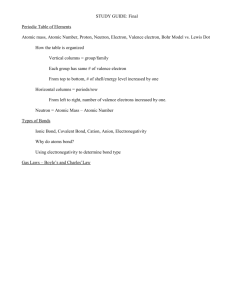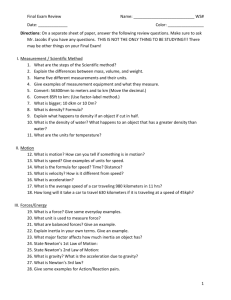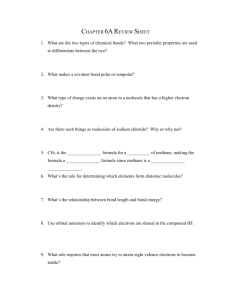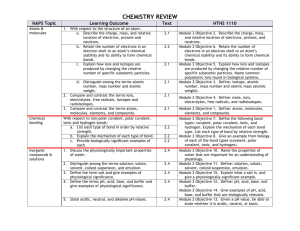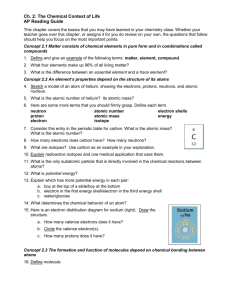Chapter 46 Objectives - Saratoga High School
advertisement
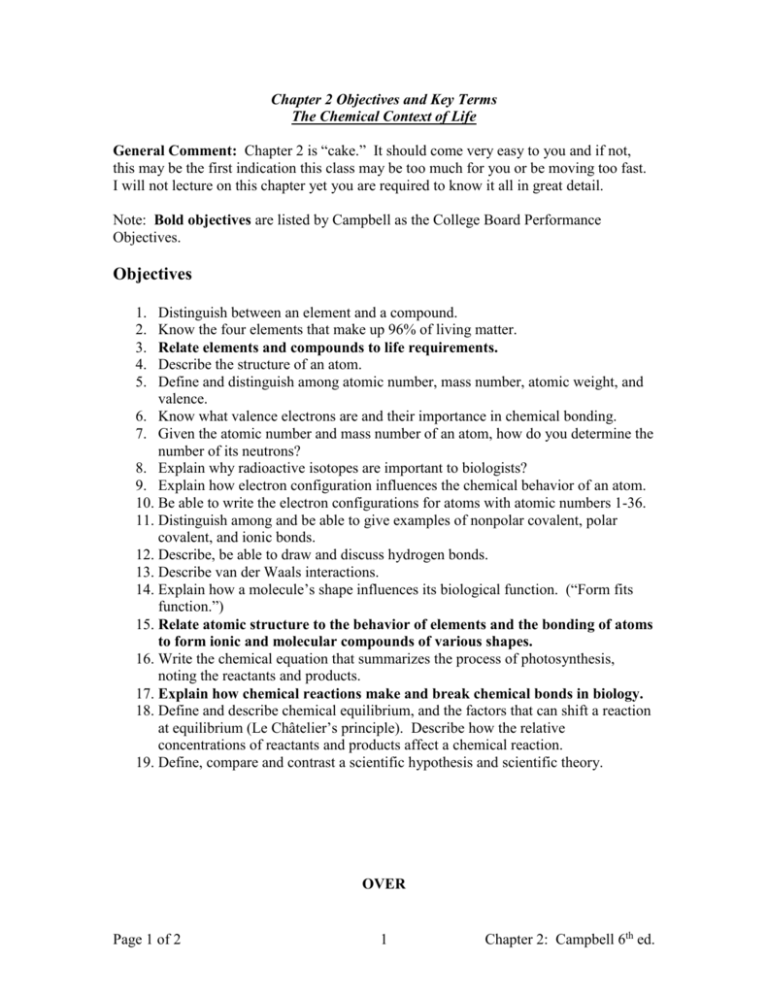
Chapter 2 Objectives and Key Terms The Chemical Context of Life General Comment: Chapter 2 is “cake.” It should come very easy to you and if not, this may be the first indication this class may be too much for you or be moving too fast. I will not lecture on this chapter yet you are required to know it all in great detail. Note: Bold objectives are listed by Campbell as the College Board Performance Objectives. Objectives 1. 2. 3. 4. 5. Distinguish between an element and a compound. Know the four elements that make up 96% of living matter. Relate elements and compounds to life requirements. Describe the structure of an atom. Define and distinguish among atomic number, mass number, atomic weight, and valence. 6. Know what valence electrons are and their importance in chemical bonding. 7. Given the atomic number and mass number of an atom, how do you determine the number of its neutrons? 8. Explain why radioactive isotopes are important to biologists? 9. Explain how electron configuration influences the chemical behavior of an atom. 10. Be able to write the electron configurations for atoms with atomic numbers 1-36. 11. Distinguish among and be able to give examples of nonpolar covalent, polar covalent, and ionic bonds. 12. Describe, be able to draw and discuss hydrogen bonds. 13. Describe van der Waals interactions. 14. Explain how a molecule’s shape influences its biological function. (“Form fits function.”) 15. Relate atomic structure to the behavior of elements and the bonding of atoms to form ionic and molecular compounds of various shapes. 16. Write the chemical equation that summarizes the process of photosynthesis, noting the reactants and products. 17. Explain how chemical reactions make and break chemical bonds in biology. 18. Define and describe chemical equilibrium, and the factors that can shift a reaction at equilibrium (Le Châtelier’s principle). Describe how the relative concentrations of reactants and products affect a chemical reaction. 19. Define, compare and contrast a scientific hypothesis and scientific theory. OVER Page 1 of 2 1 Chapter 2: Campbell 6th ed. Key Terms matter element orbitals polar covalent bond valence shell cation neutron ionic bond formula unit salt hydrogen bond van der Waals forces chemical reactions reactant electronegativity Page 2 of 2 potential energy shells compound trace element ion anion electron covalent bond molecule dalton atomic number mass number isotope product chemical equilibrium 2 nonpolar covalent bond subshells energy level valence electron atom proton chemical bond ionic compound atomic nucleus structural formula molecular formula double bond atomic weight radioactive isotope Le Châtelier’s principle Chapter 2: Campbell 6th ed.
